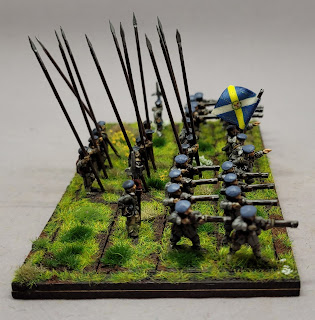Colchester
Summer 1648, the War reignites with a number of small uprisings across the country, and a Scottish Engager army cross the border. Charles is a prisoner at Carisbrooke Castle on the Isle of Wight. Colchester, and the county of Essex, which had been firmly in the grip of Parliament during the First Civil War, was slowly falling to Royalist rebels: nearby Chelmsford was in the hands of Sir Charles Lucas. Meanwhile, a failed uprising in Kent saw Kentish men flee across the Thames to join Lucas at Chelmsford.
Sir Thomas Fairfax and the New Model Army were dispatched to deal with the rebels. Lucas entered Colchester and reinforced its formidable defences. Fairfax's initial assault was repulsed, and he withdrew after losing between 500-1000 men. By 2nd June the town was encircled by the New Model Army.
A protracted siege began, and lasted eleven weeks. The local population getting caught in the crossfire. The Royalist garrison eventually surrendering on hearing the news that the Anglo-Scots Royalist army had been defeated at Preston.
During the siege both sides accused one another of war crimes: the NMA were accused of committing a number of atrocities, including the torturing of a messenger boy and the desecration of graves in the Lucas family vault; the Royalists of using poisoned bullets (bullets roughened and then rolled in sand to increase the likelihood of causing gangrenous wounds).
Fairfax's terms of surrender were harsh, even by the standards of the day: junior officers were granted quarter, but senior officers were to 'surrender to mercy' (life or death to be decided by the victorious commander).
Sir Charles Lucas, Sir George Lisle, Colonel Farre and the mercenary Sir Bernard Gascoigne were all sentenced to death by firing squad. Pro-Royalist propaganda would dub this the Loyal Sacrifice.
What's there today?
Where better to park than Priory Street car park? This is the site of the Berryfield Breach, which was made by concentrated Parliamentarian cannon fire: look at the Roman Walls and you'll notice some modern bricks infilling the Roman wall.
Colchester Castle has a small display of Civil War era arms and armour.
To the north of the castle, in Castle Park you'll find the execution site, marked by an obelisk
St Botolph's Priory was all but demolished during the fighting. Part of the site was rebuilt in 1837, as St Botolph's Church.
St Giles Church, where Lucas and Lisle are buried, is now a banqueting and conference hall. A memorial to the pair is inside.
St John's Abbey Gateway was severely damaged by grenadoes, the taking of this gateway allowed Fairfax to position cannon on St John's Green.
If you have access to Discovery Channel on demand streaming service, it is worth checking out River Hunters series 2 episode 5, where the team go in search of evidence of the Siege in the River Colne.
*It's actually been a solicitors since early/mid eighteenth century, so hardly a recent change of use.
Postcodes for SatNavs
The Priory Street Car Park (site of the Berryfield Breach), Priory Street CO1 2QA
Siege House, 75 East Street CO1 2TS
Colchester Castle, Castle Park CO1 1TJ
St James' Church, East Hill CO1 2QL
St Botolph's Priory, St Botolph's Church Walk CO2 7EE
St Giles' Church, St John's Green CO2 7EZ
St John's Abbey Gateway, St John's Street CO2 7EZ
Kings Head Inn, Headgate Court, Head Street CO1 1NP
St Mary's In The Wall Church, Church Street CO3 3AD
If you enjoyed reading this, or any of the other posts, please consider supporting the blog.































It's the Colchester Oyster Fayre this weekend. Not directly ECW related, being more mediaeval in focus, but there is usually the odd seller of re-enactment gear and mead in among the more touristy bits.
ReplyDeleteThanks Dex. Hopefully someone might be able to take advantage of that bit of inside information.
Delete